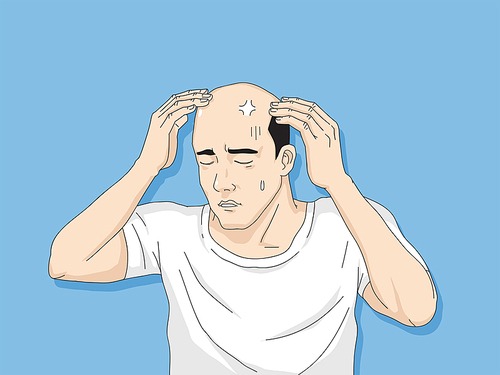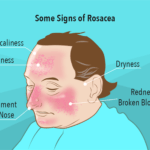Hair loss is when you lose more hair than normal from your scalp or other parts of your body. It can affect your appearance, self-esteem and well-being. Hair loss can have various causes and effects on your health and well-being. In this blog post, we will discuss the causes, symptoms and treatment of hair loss, as well as some tips on how to prevent and cope with it.
What causes hair loss?
Hair loss can be caused by a variety of circumstances, including:
• Genetics: Your genes can influence your hair growth cycle, hair texture, hair color and tendency to baldness. You may be more likely to experience hair loss if your parents or siblings have thinning hair or bald patches.
• Hormones: Your hormones can affect your hair growth and shedding. Hormonal changes due to pregnancy, menopause, thyroid problems or certain medications can cause hair loss.
• Stress: Stress can affect your physical and mental health and cause hair loss. Stress can trigger a condition called telogen effluvium, which is when your hair follicles enter a resting phase and fall out prematurely.
• Infections: Infections can affect your scalp or other parts of your body and cause hair loss. The following are some common illnesses that can cause hair loss:
• Fungal infections: These are caused by fungi that invade your skin and hair follicles and cause inflammation and itching. Some examples are ringworm, tinea capitis and seborrheic dermatitis.
• Bacterial infections: These are caused by bacteria that invade your skin and hair follicles and cause inflammation and pus. Some examples are folliculitis, impetigo and cellulitis.
• Viral infections: These are caused by viruses that invade your skin and hair follicles and cause inflammation and blisters. Some examples are herpes simplex, varicella zoster and molluscum contagiosum.
• Autoimmune diseases: These are conditions that occur when your immune system attacks your own cells and tissues by mistake. Some autoimmune diseases that can cause hair loss are:
• Alopecia areata: This is when your immune system attacks your hair follicles and causes patchy hair loss on your scalp or other parts of your body.
• Lupus: This is when your immune system attacks your skin, joints, organs and blood vessels and causes inflammation, rash, pain and fatigue.
• Scleroderma: This is when your immune system attacks your skin, connective tissue and blood vessels and causes hardening, thickening and scarring of the skin.
• Medications: Some medications can affect your hair growth and shedding and cause hair loss as a side effect or interact with other drugs or foods. These include chemotherapy drugs, antibiotics, anticoagulants,anticonvulsants, antidepressants, antifungals, antihypertensives, anti-inflammatory drugs, antithyroid drugs, birth control pills and steroids.
• Nutritional deficiencies: Your nutrition can affect your hair growth and quality. Protein, for example, is deficient. iron, zinc, biotin, vitamin A, vitamin B12 and vitamin D can cause hair loss.
• Physical trauma: Physical trauma can damage your scalp or hair follicles and cause hair loss. Some examples of physical trauma that can cause hair loss are:
• Burns: These are injuries that occur when your skin is exposed to heat, electricity or chemicals.
• Injuries: These are wounds that occur when your skin is cut, bruised or torn.
• Surgery: This is a surgical technique that entails cutting, removingor repairing a part of your body.
• Radiation therapy: This is a treatment that involves using high-energy rays to kill cancer cells or shrink tumors.
What are the symptoms of hair loss?
The main symptom of hair loss is having less hair than normal on your scalp or other parts of your body. You may also notice changes in your hair such as:
• Thinning or receding hairline
• Bald patches or spots
• Diffuse or widespread hair loss
• Brittle or dry hair
• Changes in hair texture or color
How is hair loss diagnosed?
Hair loss is usually diagnosed based on your medical history, physical examination and tests. Your healthcare provider may ask you about your symptoms, when they started, how they affect you, what triggers them and what relieves them. They may also ask you about your diet, medications, allergies, medical conditions and family history. They may also perform some tests to rule out any underlying causes of hair loss. These tests may include:
• Hair analysis: This involves examining a sample of your hair under a microscope to check for signs of damage, infection or disease.
• Scalp biopsy: This involves taking a small piece of skin from your scalp and inspecting it under a microscope for symptoms of inflammation, infection or disease.
• Blood tests: and inspecting it under a microscope for symptoms of inflammation, inflammation, anemia, diabetes, thyroid problems or hormonal imbalances.
• Trichoscopy: This involves using a device that magnifies the image of your scalp and allows the doctor to see the details of your hair follicles and blood vessels.
How is hair loss treated?
The treatment of hair loss depends on the cause and severity of your condition and your personal goals. The main goals of treatment are to stop or slow down the hair loss, stimulate new hair growth and improve the appearance of your hair. Some of the most frequent hair loss remedies include:
• Medications: Some medications can help you with hair loss by affecting your hormones, immune system or blood circulation. However, these medications are not suitable for everyone and may have side effects such as itching, rash, headache or sexual dysfunction. You should only use these medications under the supervision of your healthcare provider and in combination with other treatments. Some examples of medications for hair loss are:
• Minoxidil: is a cream-like substance that is applied to the scalp twice daily. It operates by dilapidating blood vessels. and increasing the blood flow to the hair follicles and stimulating new hair growth. It can be used by men and women with any type of hair loss.
• Finasteride: This is an oral tablet that you take once a day. It acts by preventing testosterone conversion. to dihydrotestosterone (DHT), a hormone that shrinks the hair follicles and causes male pattern baldness. It can only be used by men with male-pattern baldness.
• Spironolactone: This is an oral tablet that you take once or twice a day. It acts by preventing DHT from acting. on the hair follicles and preventing female pattern baldness. It can only be used by women with female pattern baldness.
• Laser therapy: This is a treatment that involves using low-level laser light to stimulate the cells in the scalp and increase blood flow and oxygen delivery to the hair follicles and promote new hair growth.It can be done at home or in a clinic using a handheld device, a cap or a helmet.
• Platelet-rich plasma (PRP) therapy: This is a treatment that involves injecting plasma that contains platelets and growth factors into the scalp to stimulate the healing process and activate the dormant hair follicles and promote new hair growth. It can be done in a clinic using blood drawn from your arm.
• Hair transplant surgery: This is a procedure that involves moving healthy hairs from one part of the scalp to another part where there is thinning or balding. It can be done using two methods:
• Follicular unit transplantation (FUT): This involves removing a strip of skin from the back or sides of the scalp and dividing it into tiny grafts containing one to four hairs each. These grafts are then implanted into tiny incisions made in the recipient area. This procedure produces a linear scar on the donor site.
• Follicular unit extraction (FUE): This involves removing individual hairs from the back or sides of the scalp using a small punch tool. These hairs are then implanted into tiny incisions made in the recipient area. This method does not leave a linear scar but may cause tiny dot scars on the donor area. How can hair loss be prevented? Some tips to prevent or reduce hair loss include:
• Eating a well-balanced diet rich in protein, iron, zinc, biotin, vitamin A, vitamin B12 and vitamin D for healthy hair growth.
• Avoiding harsh chemicals or treatments such as bleaching, dyeing, perming or straightening that can damage or break the hair.
• Avoiding tight hairstyles such as braids, ponytails, buns or cornrows that can pull or stress the hair.
• Avoiding excessive heat such as blow-drying, curling
or ironing that can dry out or burn the hair.
• Avoiding brushing or combing wet hair as this can cause breakage.
• Using gentle products such as shampoos, conditioners as well as style products that are appropriate for your hair type and do not contain sulfates, parabens or alcohol.
• Massaging your scalp regularly with oils.



